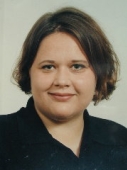The Foundation of Public Opinion
The Foundation of Public Opinion
Principal investigators

Abstract
The work of the group has covered three main areas of public opinion research. First, we have studied how opinion is distributed and can be explained at the mass level. The dependent variables are selected from a large number of varieties of public opinion and political behavior: Policy preferences, party identification, trust in government, confidence in institutions, and aspects of voting in referendums and parliamentary- and presidential elections. Explanatory models are developed from variables that include social structure, culture, economic performance, and an extensive menu of political factors. Most of the studies are comparative and cover change over time. Western Europe and the United States are included in most of the work, but some analyzes go well beyond this area. The data are from major comparative survey programmes: The International Social Survey Program, The World Values Survey, the Eurobarometers, the Nordic Referendum Surveys, and various national election surveys.
The accumulation of survey data across countries and over time has opened up for the study of macro opinion based on aggregation of individual responses. Macro opinion demonstrates characteristic variations across nations and is relatively stable over time. The comparative variations in opinion patterns are measured against conventional views and stereotypes about national characters and cultures in the comparative politics literature. The change over time is assessed against structural change in societies to see if opinion adjusts to change or reacts against such change. Equality beliefs and distributive justice norms constitute important areas of research to study the relationship of mass opinion and economic structure.
Mass-elite linkages constitute the second area of research. How mass public opinion is represented in various political elites is decisive for the democratic nature of the political representation process. Most of the empirical work of the chain of political representation is based on agency theory and institutional analysis. Data from mass surveys are complemented with elite survey data. Parts of the analysis are based on a new data collection of coalition agreements and government structures in 13 European countries. This allows for a systematic investigation of the impact of institutional variation on the process of political representation.
The study of the mass-elite linkage is particularly exciting in cases where mass and elite diverge in opinion. The 1994 EU-referendum campaigns constitute an intriguing case for the study of how political elites try to lead. With panel data from the referendum surveys we can test a set of models of how the conflicts between party and followers are solved in the period leading up to the vote. The results from these tests yield important information about how much power party leadership has over their voters.
Mass opinion should be tracked over its full course. In democracy that means that one needs to show how movements of public opinion impact on actual public policy. The main research in this third area of study is done by the cooperating scholars (Carlsen and Hibbs). The empirical work is focused on empirical tests for 57 elections in six OECD countries of hypotheses derived from the rational partisan theory of business cycles. A parallel work, using a different methodological approach, is investigating the link between political representation and policy outcomes in Norwegian communes.
Fellows

Toril Aalberg

